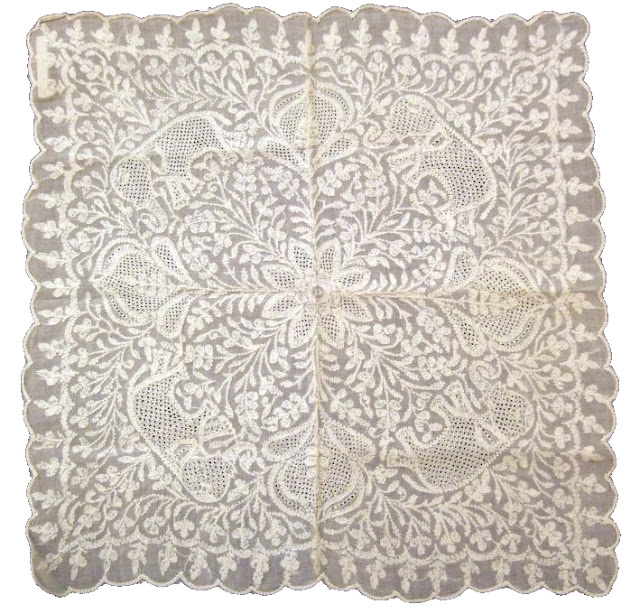The chikan or chikankari is a delicate and subtle embroidery done in white thread on a white background, though sometimes yellowish silk is also used in addition to the white thread. The embroidery is characterized by the contrasts in texture provided by the delicacy of fine jali work and heavily embossed stitches on fine fabrics. It is amazingly beautiful with its delicate patterns and the excellence of execution. Noor Jehan, wife of the Mughal emperor Jehangir is said to have introduced it to Lucknow. The earliest samples of chikan embroidery that have survived are from the 19th century. It is not clear where the word chikan came from. It might come from Persian where it means "embroidery", or it could be of Bengali origin where it means "very fine thing".
During the first half of the 19th century a school of chikankari embroidery developed in Lucknow with its own unique style and aesthetic. At the time chikan work was used mainly on caps. A delicate chikan cap could take up to a year to make.
This and all the above photos: Lucknow Chikan Shawl, India, late 18th-early 19th century. Cotton, worked on a light tan ground, possibly a natural coloured cotton. Embroidery; open and pulled work, satin stitch, running stitch Marcuson and Hall Textiles
Design motifs in chikan are mostly floral and employ such common stitches as satin stitch, buttonhole stitch, herringbone stitch, stem stitch, knot stitch as well as jali or netting work which is created by counting and pushing aside threads of the ground fabric. The number of stitches used in a chikankari work can include as many as 35 different stitches. However it is very rare that a piece of chikankari work will be entirely embroidered by one person only. Usually, different groups of stitches are done by different embroiderers specialized in particularly those stitches.
References:
Asian Embroidery by Jasleen Dhamija
Handicrafts of India by Kamaladevi Chattopadhyay
sample: Lucknow, India, late 19th century - early 20th century. Cotton muslin, woven, embroidered with cotton and muga silk thread and tussar silk The Victoria and Albert Museum
Handkerchief: Lucknow, India, late 19th century. Muslin, woven, with cotton Chikan embroidery with sections of bukhia and openwork The Victoria and Albert Museum
The decline of chikankari started in the 1920s when the shopkeepers became totally ignorant of the craft driven by the competition for cheaper and cheaper chikan work more than by any artistic value. And though the fashion for chikan embroidery has returned recently, in India as well as in European countries, the present day work is comparatively rougher and as craftsmen themselves saying, just a shadow of previous finesse.
Lucknow muslin shawl, India, ca. 1880. Muslin, woven, embroidered with chikan work embroidery The Victoria and Albert Museum
References:
Asian Embroidery by Jasleen Dhamija
Handicrafts of India by Kamaladevi Chattopadhyay









Lovely embroidery. Embroidery Digitising Services Great.
ReplyDeleteThe handcrafted carpets from DeRugDealer are gorgeous! Every rug exhibits the traditional methods and meticulous attention to detail. They are lovely, long-lasting, and distinctive; they provide warmth and charm to my house. Without these beautiful objects, decorating would be impossible!
ReplyDeletehandmade carpet